Ultrasound guided radial artery cannulation in adult patients

Radial artery cannulation is used routinely in clinical settings for many purposes, such as for accurate hemodynamic monitoring, repeated blood sampling and as access for percutaneous coronary intervention” Yao et al (2017). Abstract: Radial artery cannulation is used routinely in clinical settings for many purposes, such as for accurate hemodynamic monitoring, repeated blood sampling and […]
The 50th anniversary of long-term central venous catheters

Tunneled central venous catheters (CVC) were developed five decades ago. Since then, several clinician-inventors have created a variety of catheters with different functions. Indeed, many catheters have been named after their inventor” Gow et al (2017). Abstract: Background: Tunneled central venous catheters (CVC) were developed five decades ago. Since then, several clinician-inventors have created a […]
Novel tunnelled central catheter placement in a pediatric patient

When stable central venous access is required for long-term intravenous infusions, several options are available including peripherally inserted central catheters (PICC), tunneled catheters and ports” Goel et al (2017). Abstract: Establishing venous access can be an important and often complex aspect of care for pediatric patients. When stable central venous access is required for long-term […]
Providing patient education is the first step to CLABSI prevention

Enhancing patient self-efficacy in preventing CABSIs requires them to have an adequate level of knowledge on infection prevention and the skills and confidence to self-care in the community” Mariano and Castro-Sánchez (2017). Abstract: The threat of catheter-associated bloodstream infections (CABSIs) among hemodialysis patients is present beyond health care settings. With the rise of antimicrobial-resistant infections, […]
Hybrid chest wall arteriovenous graft in central venous stenosis
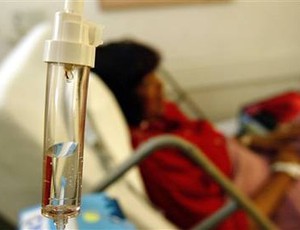
As more patients live longer while receiving hemodialysis, maintaining permanent hemodialysis vascular access (VA) is increasingly challenging as they ultimately exhaust their conventional upper extremity options” Rowse and Kirksey (2017). Abstract: As more patients live longer while receiving hemodialysis, maintaining permanent hemodialysis vascular access (VA) is increasingly challenging as they ultimately exhaust their conventional upper […]
Description of pain associated with implantable port insertion
We aimed to describe characteristics of acute pain related to port-a-cath implantation (PACI) in an oncology department” Mejri et al (2017). Abstract: Background: We aimed to describe characteristics of acute pain related to port-a-cath implantation (PACI) in an oncology department. [ctt link=”9b5e5″ template=”1″]ReTweet if useful… Description of pain associated with implantable port insertion https://ctt.ec/9b5e5+ @ivteam […]
Dermatotomy during PICC insertion does not increase rates of upper extremity DVT
We conclude that a MST kit requiring a dermatotomy does not increase the risk of early UEDVT” Suleman and McDiarmid (2017). Abstract: Background: Successful placement of peripherally inserted central catheters (PICCs) has increased with the use of a modified Seldinger technique (MST). However, differences exist between MST kits related to the transition between the introducer […]
Thromboembolism in patients with peripherally inserted central catheters
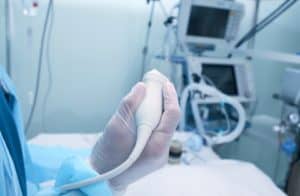
We retrospectively examined this association in hospitalized patients, highlighting anatomically associated VTEs (those with DVT in the PICC extremity)” Kimple and Nazir (2017). Abstract: Background: Peripherally inserted central catheters (PICCs) are ubiquitous in modern hospitals, but are associated with venous thromboembolism (VTE), which includes deep vein thrombosis (DVT) and/or pulmonary embolism (PE). We retrospectively examined […]
Audit of implantable port needle placement accuracy

Variability in accessing of implantable ports is described relative to research- and manufacturer-recommended needle bevel angle, needle puncture angle, and central puncture position. The extent to which such deviation influences port function deserves focused clinical research” Murray et al (2017). Abstract: Aim: Implantable ports are typically inserted by interventional radiologists or surgeons; however, daily maintenance, […]
Novel silver-plated dressing for central venous catheters

To assess a novel silver-plated dressing (SD) for central venous catheters in comparison to chlorhexidine gluconate-impregnated sponge (CHGIS) dressings in preventing central line-associated bloodstream infections (CLABSIs) in adult intensive care unit (ICU) patients” Karlnoski et al (2017). Abstract: OBJECTIVE: To assess a novel silver-plated dressing (SD) for central venous catheters in comparison to chlorhexidine gluconate-impregnated […]
Significant variability in the interpretation of CLABSI data exists among experts

Significant variability in the interpretation of CLABSI data exists among experts. This finding is likely related to data complexity, particularly with respect to risk-adjusted data. Improvements appear necessary in data sharing and public policy efforts to account for this complexity” Govindan et al (2017). Abstract: OBJECTIVE: Central line-associated bloodstream infection (CLABSI) is associated with significant […]
Critically ill children with CVC have a significant risk of developing VTE

The incidence of venous thromboembolism (VTE) is rising among inpatients in US hospitals, especially among kids with central venous catheters (CVCs) in the pediatric intensive care unit (PICU)” Tran et al (2017). Abstract BACKGROUND: The incidence of venous thromboembolism (VTE) is rising among inpatients in US hospitals, especially among kids with central venous catheters (CVCs) […]
Pain after needle insertion into an implantable central venous port

The aim of this study was to determine the effects of inhalation aromatherapy on procedural pain and anxiety after needle insertion into an implantable central venous port catheter” Yayla and Ozdemir (2017). Abstract: BACKGROUND: Needle insertion into an implantable central venous port catheter may lead to procedural pain and anxiety in cancer patients. OBJECTIVE: The […]
Impact of two bundles on central catheter-related bloodstream infection

To evaluate the impact of the implementation of insertion and maintenance bundles on the rates of catheter-related bloodstream infection in an intensive care unit” Padilla Fortunatti et al (2017). Abstract: OBJECTIVE: To evaluate the impact of the implementation of insertion and maintenance bundles on the rates of catheter-related bloodstream infection in an intensive care unit. […]
Study on risk factor of central venous catheter infection in ICU

To analyze the etiology and risk factors of central venous catheter (CVCs) infections, and to explore the prophylaxis and treatment for catheter-related infections” Zhang et al (2017). Abstract: OBJECTIVE: To analyze the etiology and risk factors of central venous catheter (CVCs) infections, and to explore the prophylaxis and treatment for catheter-related infections. [ctt link=”02ntY” template=”1″]ReTweet […]
Caregiver education reduces the incidence of community-acquired CLABSIs
We have shown that the incidence of community-acquired central line-associated bloodstream infections in children with intestinal failure can be reduced through formal education of central venous catheter care to family members” Drews et al (2017). Abstract: Pediatric patients with intestinal failure often require central venous catheters for extended periods of time for parenteral nutrition, blood […]
Needlefree connectors should be evaluated on individual connector design

This study revealed significant differences in reflux volumes for fluid displacement based on NFC design” Hull et al (2017). Abstract: METHODS: In this study, 14 NFC brands representing each of the four market-categories of NFCs were selected for evaluation of fluid movement occurring during connection and disconnection of a syringe. Study objectives were to 1)theoretically […]
Combined short- and long-axis ultrasound-guided central venous catheterization
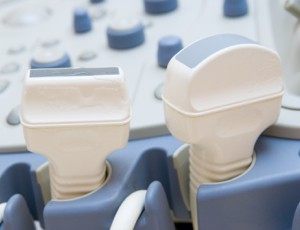
Using the SLA approach significantly improved the success rate of internal jugular vein puncture performed by novice physicians on a manikin model, without increasing procedural duration” Takeshita et al (2017). Abstract: OBJECTIVES: Visualizing the needle tip using the short-axis (SA) ultrasound-guided central venous catheterization approach can be challenging. It has been suggested to start the […]
Hydrophilic coated wire improves implantable port placement
The use of a hydrophilic coated wire significantly decreased the number of CVP and the incidence of pneumothorax. TVS is a safe and successful second-line rescue strategy” Polychronidis et al (2017). Abstract: Background: Insertion of a Totally Implantable Access Port (TIAP) can be performed either via Central Vein Puncture (CVP) or Brachiocephalic Vein Cut-down (venous […]
Postmarketing experience with Neutrolin® catheter lock solution
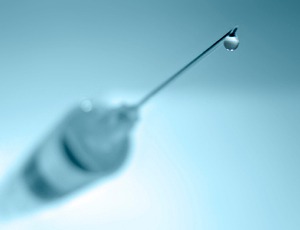
Taurolidine hydrolyzes into two antimicrobial moieties, formaldehyde and methylene glycol, which react with microbial surfaces. Neutrolin® (taurolidine, heparin, calcium citrate) was recently introduced in Germany as an antimicrobial catheter lock solution” Reidenberg et al (2017). Abstract: Catheter-related bloodstream infections (CRBSI) are major complications for patients with life-threatening conditions requiring chronic vascular catheterization. The wide range […]
When should central venous catheters be removed in the NICU?

The purpose was to evaluate outcomes of idle peripherally inserted central catheters (PICCs) and tunneled central venous catheters (TCVCs) and determine the incidence of line-related infections and replacements” Litz et al (2017). Abstract: PURPOSE: There is debate regarding the optimal timing of central line removal in the neonatal intensive care unit (NICU). The purpose was […]
Nurse-led ultrasound-enhanced vascular access preservation program
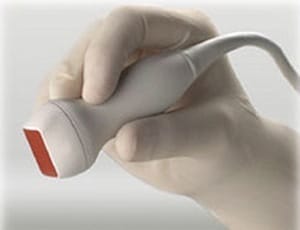
In this quality improvement report, the authors describe the implementation of a nurse-led vascular access preservation program using ultrasound technology as a method to reduce the use of nonessential peripherally inserted central catheters” Reeves et al (2017). Abstract: Insertion of peripheral iv catheters is a common practice in medical-surgical care settings. The frequency with which […]
Effect of preanalytical and analytical variables on mean platelet volume
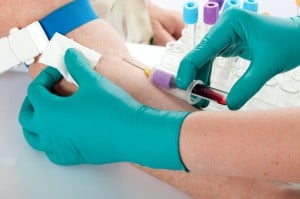
The study endpoint was to analyze the effect of preanalytical (time, temperature, anticoagulant) and analytical (imprecision, correlation between volume and platelet concentration) variables on mean platelet volume (MPV)” Buttarello et al (2017). Abstract: BACKGROUND: The study endpoint was to analyze the effect of preanalytical (time, temperature, anticoagulant) and analytical (imprecision, correlation between volume and platelet […]
What is the impact of water intake on clinical chemistry analytes
The aim was to study the effects of 300 mL water intake 1 h before phlebotomy on specific analytes” Benozzi et al (2018). Abstract: INTRODUCTION: Currently available recommendations regarding fasting requirements before phlebotomy do not specify any maximum water intake volume permitted during the fasting period. The aim was to study the effects of 300 […]
In flight use of infusion pumps and possibility of pump failure

In this small study, the MSIII proved to be highly resilient and able to maintain function even after large repetitive emboli” Paul Pelletier and Fisher (2017). Abstract: The ALARIS MSIII Infusion Pump (CareFusion, San Diego, CA) uses 3 separate alarms designed to prevent air emboli: “check air sensor,” “air in lower tubing,” and “air in […]
Infusion pump for the administration of thawed hematopoietic progenitor cells
An existing nontunneled catheter is occasionally used instead and often results in a slower infusion rate. To ensure expedient and consistent infusions, we validated and implemented the use of an infusion pump for thawed peripheral blood stem cells” Reich-Slotky et al (2017). Abstract: BACKGROUND: Direct thaw and administration of previously cryopreserved peripheral blood stem cell […]
Review of clinical response associated with infusion occlusion
Unintentional catecholamine flush caused by inappropriate release of an intravenous occlusion during use of a syringe pump in the intensive care unit (ICU) can have dangerous consequences in patients receiving critical care. We investigated whether anesthesiology residents understood how to deal with syringe pump occlusion in a simulated ICU setting” Kariya et al (2017). Abstract: […]
Critical care pharmacist-led interventions decrease drug costs
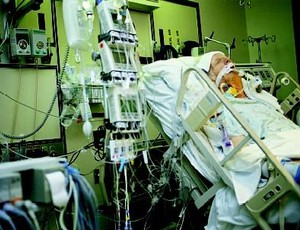
The aim of this study is to describe the effect of pharmacist-led interventions on drug therapy and clinical strategies on ICU patient outcome and hospital costs” Leguelinel-Blache et al (2017). Abstract: OBJECTIVES: Surgical and medical ICU patients are at high risk of mortality and provide a significant cost to the healthcare system. The aim of […]
Fluid resuscitation practices in cardiac surgery patients

Fluid resuscitation during cardiac surgery is common with significant variability in clinical practice. Our goal was to investigate current practice patterns of fluid volume expansion in patients undergoing cardiac surgeries in the USA” Aronson et al (2017). Abstract: BACKGROUND: Fluid resuscitation during cardiac surgery is common with significant variability in clinical practice. Our goal was […]
Smart syringe pumps for drug infusion during dental intravenous sedation
In addition, programmed infusion systems and target-controlled infusion systems have also been developed to enable effective administration of sedatives” Seo and Lee (2017). Abstract: Dentists often sedate patients in order to reduce their dental phobia and stress during dental treatment. Sedatives are administered through various routes such as oral, inhalation, and intravenous routes. Intravenous administration […]

